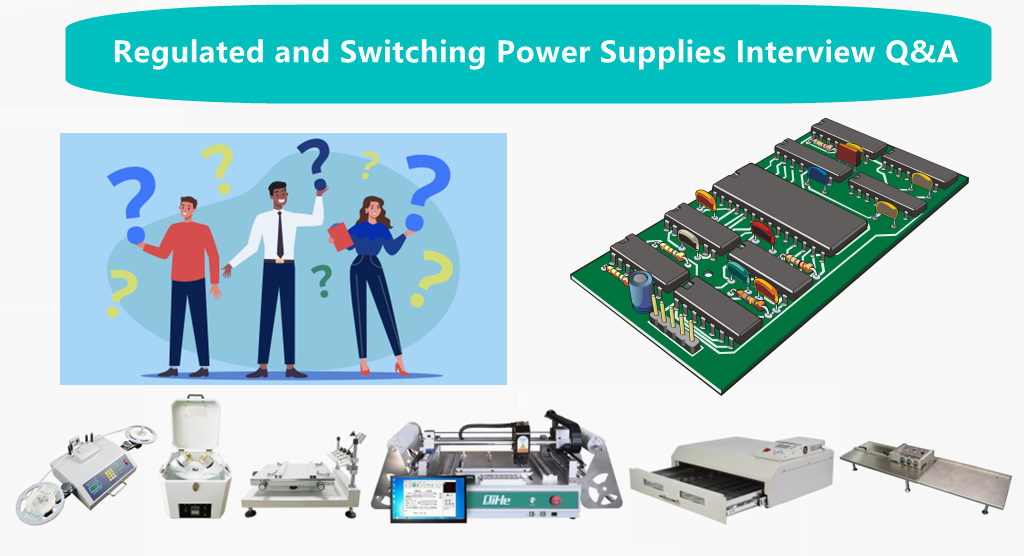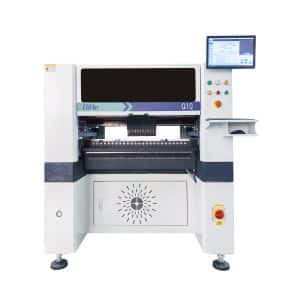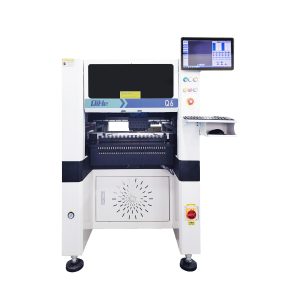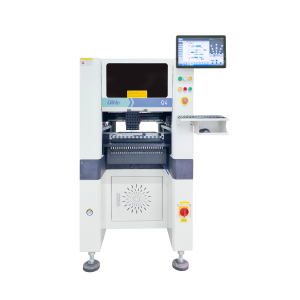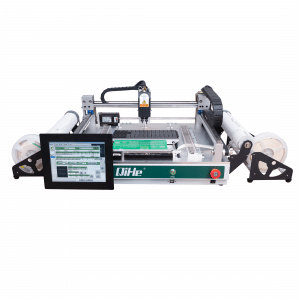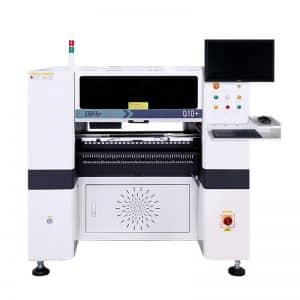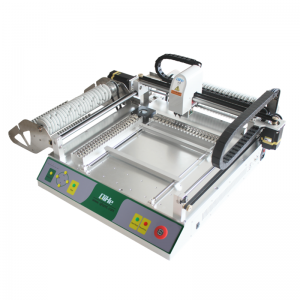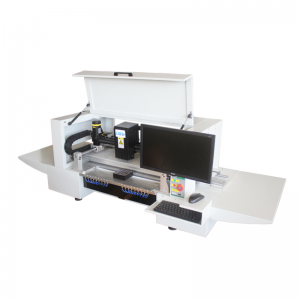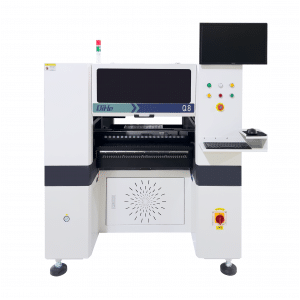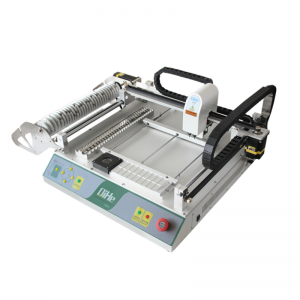With the development and innovation of power electronics technology, switching power supply technology is also constantly innovating. At present, switching power supply is widely used in almost all electronic equipment due to its small size, light weight and high efficiency. It is an indispensable power supply method for the rapid development of today’s electronic information industry.Today qihe smt pick and place machine sharing Regulated and Switching Power Supplies Interview Questions and Answers .
There are two types of modern switching power supplies: one is DC switching power supply; the other is AC switching power supply.
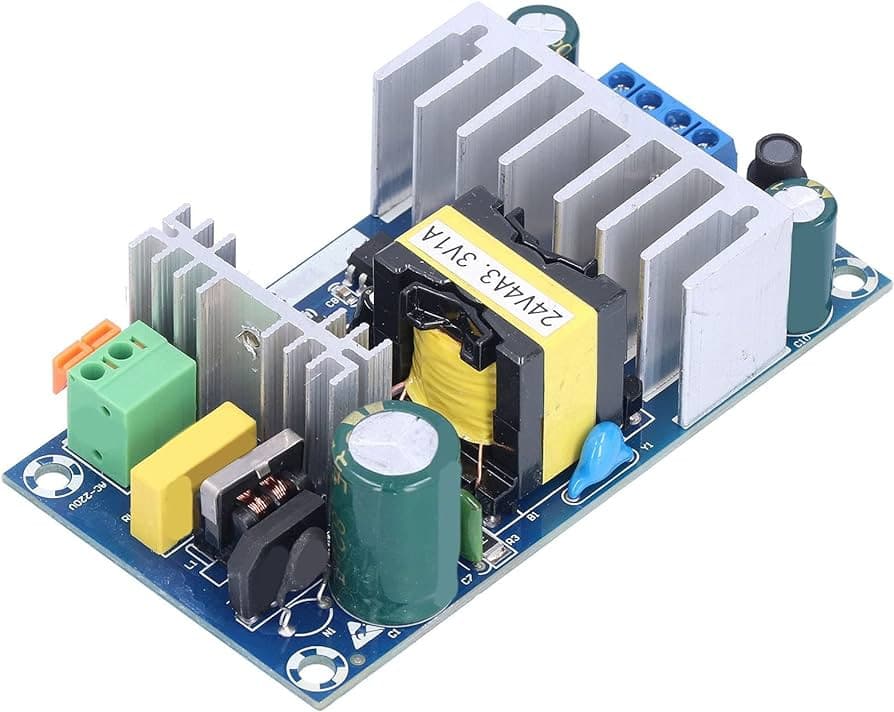
What is mainly introduced here is only the DC switching power supply. Its function is to convert the original power supply (coarse power) with poor power quality, such as mains power supply or battery power supply, into a higher quality DC voltage that meets the requirements of the equipment. The core of the DC switching power supply is the DC/DC converter.
Therefore, the classification of DC switching power supplies relies on the classification of DC/DC converters. In other words, the classification of DC switching power supplies is basically the same as the classification of DC/DC converters. The classification of DC/DC converters is basically the classification of DC switching power supplies.
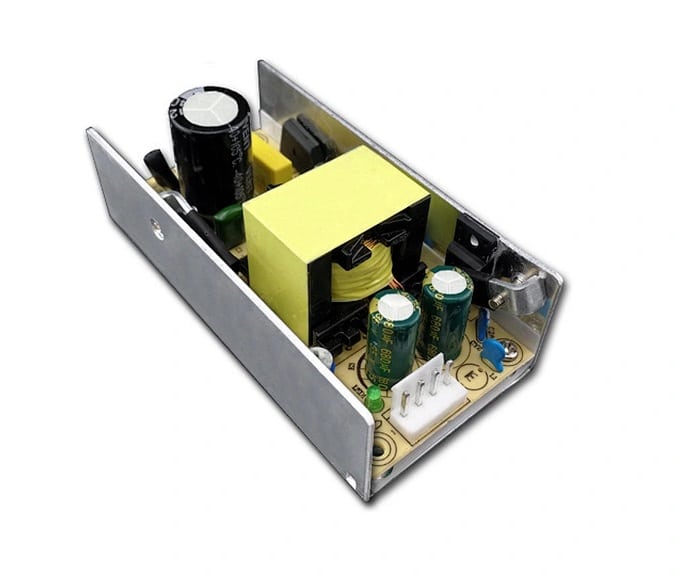
The switching power supply is roughly composed of four major parts: main circuit, control circuit, detection circuit, and auxiliary power supply.
- Main circuit
Inrush current limiting: Limit the inrush current on the input side at the moment when the power is turned on.
Input filter: Its function is to filter the clutter existing in the power grid and prevent the clutter generated by the machine from being fed back to the power grid.
Rectification and filtering: directly rectify the grid AC power into smoother DC power.
Inverter: converting rectified DC power into high-frequency alternating current, which is the core part of high-frequency switching power supply.
Output rectification and filtering: Provide stable and reliable DC power supply according to load needs.
- Control circuit
On the one hand, samples are taken from the output terminal, compared with the set value, and then the inverter is controlled to change its pulse width or pulse frequency to stabilize the output. On the other hand, based on the data provided by the test circuit and identified by the protection circuit, it provides The control circuit performs various protection measures on the power supply.
- Detection circuit
Provide various running parameters and various instrument data in the protection circuit.
- Auxiliary power supply
Realize the software (remote) startup of the power supply to provide power for the protection circuit and control circuit (PWM and other chips).
Here are some classic answers about switching power supplies.
- If the switching power supply transformer uses copper tape instead of enameled wire, how to calculate the current allowed to pass through it? For example, for a copper strip with a thickness of 0.1mm, how to calculate the current allowed to pass?
Expert answer: If the switching power supply transformer uses copper strips instead of enameled wires, the eddy current losses of the copper strips (enameled wires) can be greatly reduced, and the operating frequency can be increased accordingly, but the DC losses will remain almost unchanged. The current density allowed to pass through the copper strips should generally not exceed 4.5A/mm2. The current density is equal to the current divided by the cross-sectional area of the conductor, which is equal to the thickness (0.1mm) times the width (the width of the copper strip).
- Are the AC circuit of the power switch and the AC circuit of the rectifier most likely to produce electromagnetic interference?
Expert answer: The most serious place where electromagnetic interference is generated by a switching power supply is the circuit composed of the primary and secondary coils of the switching transformer. However, its interference will cause radiation and conduction interference to other circuits through induction. The most serious place for conduction interference and radiation interference is It is the power cord, because the power cord can easily become a half-wave oscillator antenna of the radiation source. In addition, it is connected to external lines and can easily transmit interference signals to other devices. Therefore, the power line must be effectively isolated at the input end of the switching power supply.
- What are the specific methods to reduce the temperature rise of the transformer?
Expert answer: One way to reduce the temperature rise of the transformer is to reduce the value of the maximum magnetic flux increment (Bm) of the transformer core, because the loss of the transformer core (hysteresis loss and eddy current loss) is proportional to the square of the magnetic flux density. Proportional; the other is to reduce the operating frequency of the switching power supply, because the loss of the transformer core (hysteresis loss and eddy current loss) is proportional to the operating frequency; the other is to reduce the loss of the coil, the loss of the coil (mainly eddy current loss), The eddy current loss and skin effect loss of the coil are also proportional to the operating frequency. To reduce the DC loss of the coil, the current density of the wire must be reduced. Generally, the current density of enameled wire cannot exceed 4.5A/square millimeter.
- How does the duty cycle of the flyback switching power supply change?
Expert answer: The duty cycle of the flyback switching power supply is mainly determined by the input voltage and the withstand voltage of the switching power supply tube. When the input voltage changes, the duty cycle will also change. For example, when the input voltage is AC260V, if the withstand voltage of the power switch tube is 650V, the duty cycle is 0.306; when the input voltage is AC170V, the duty cycle is approximately 0.5; when the input voltage is lower than AC170V, the duty cycle The ratio is greater than 0.5. But no matter how the input voltage changes, the switching power supply will increase the value of the output voltage to stabilize (or change) by changing the duty cycle.
- What is the main difference between forward and flyback?
Expert answer: Forward switching power supply means that when the power switch tube is turned on, the power supply provides power output to the responsible person, but there is no power output when it is turned off. The flyback switching power supply is just the opposite. When the power switch is turned on, it only stores energy in the transformer and does not provide power output to the load. It only provides output to the load when the power switch is turned off. The output voltage of the forward switching power supply is the average value of the rectified output voltage, and the output voltage of the flyback switching power supply is the average half-wave value of the rectified output voltage. The phases of the two voltage outputs are exactly opposite pick and place machine.
- Can you talk about loop design in detail?
Expert answer: The gain of the feedback loop is neither bigger nor better, nor smaller is better. When the gain of the feedback loop is too high, the output voltage will track back and forth around the average value, and the output voltage will fluctuate greatly. The higher the gain, the greater the amplitude of the fluctuation. In severe cases, oscillation will occur; when the gain of the feedback loop When it is too low, the output voltage will be unstable because the voltage cannot track properly and there will be a hysteresis error.
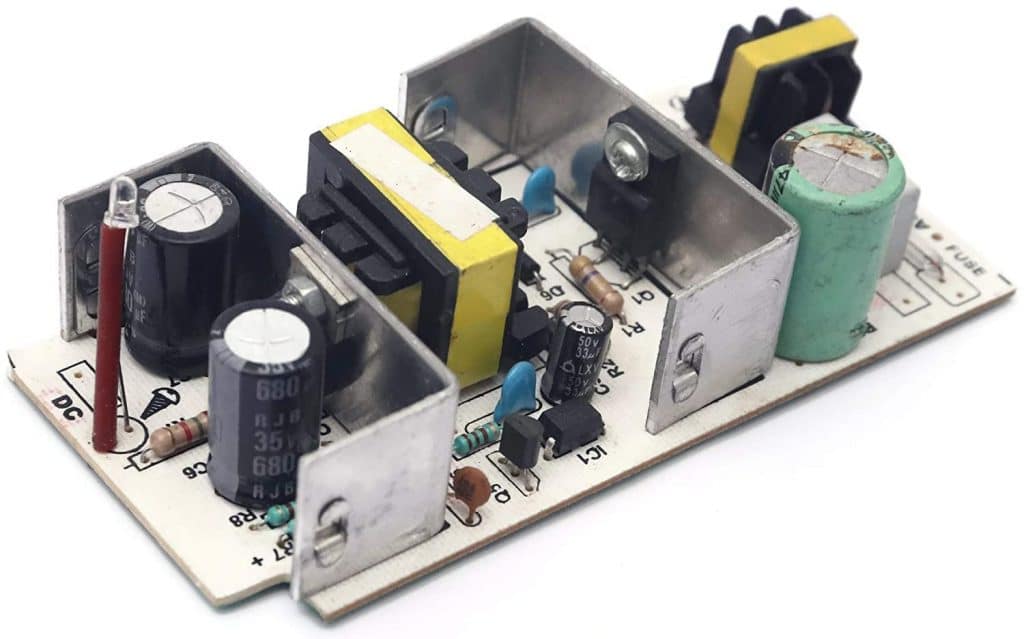
In order to stabilize the output voltage without oscillation, the feedback loop is generally divided into three loops. One loop is used to determine the size of the differential gain, the other loop is used to determine the size of the integral gain, and the third loop is Determine the size of the DC gain. The purpose of this is that when the error signal is small, the loop gain is large, and when the error signal is large, the loop gain becomes small, that is, the gain of the error amplifier is dynamic. By carefully adjusting the gains of these three feedback loops, the switching power supply can be stable without oscillation.
- How to minimize the flyback power switch MOS? Especially under hard switching conditions.
Expert answer: Reduce the duty cycle, but if the duty cycle is too low, the working efficiency of the power supply will be greatly reduced, and the voltage adjustment range will also be reduced.
- What proportion of copper foil loss accounts for power loss?
Expert answer: Very small. If the copper foil loss is large, the temperature rise of the copper foil will be very high. If it exceeds 80 degrees, the paint on the copper foil will turn yellow. But it is only equivalent to the loss of a metal film resistor of about 1 to 3 watts at the same temperature rise.
What causes the problem of large and small driving waveforms? ? I have a power supply, and the output driver is normal when the voltage is AC85-120V. When the voltage changes to 120-150V, the driver has small and large ripples, and the output current drops significantly. When the voltage increased to 150V-265V again, the frequency of the driving waveform was completely wrong, and the output was also wrong pick and place machine.
Expert answer: This situation will occur if your drive circuit uses a capacitor or transformer for output, because when the capacitor or transformer transmits a waveform (signal), the signal cannot contain a DC component. If it contains a DC component, the output waveform will be severely distorted. Only when the output waveform of the drive circuit has a duty cycle of 0.5, the output waveform will not be distorted. If the duty cycle is too large or too small, distortion will occur.
I would like to ask about the selection of rectifier bridge. What kind of rectifier bridge should be selected for different powers? Another thing is that I made a 30W power supply and used a 3A700V rectifier bridge. I found that the rectifier bridge was very hot. The temperature reached over 60 degrees within a few minutes. What are the causes of the rectifier bridge getting hot?
Expert answer: The selection of the rectifier diode is mainly determined by the three parameters of the current flowing through the rectifier diode, the withstand voltage and the operating frequency. When designing circuit parameters, the current flowing through the rectifier diode can generally only take the nominal value ( one-third of the value at 25°C) because the operating temperature flowing through the rectifier diode may rise above 80°C. If the turn-on and turn-off speed of the rectifier diode is very low, it will still conduct for a period of time when the voltage is reversed, that is, the reverse current is very large, so the rectifier diode will also generate heat. Your rectifier bridge heating may fall into the latter situation.
Read more: Regulated and Switching Power Supplies Interview Questions and AnswersBest seller SMT Machine :Qihe smt line products
-
Q10 SMT Automatic pick and place machine 10 Heads 100 Slots High Precision and High Efficiency SMT/LED Assembly
-
Q6 SMT pick and place machine 6heads 50slots With PCB Rail Servo Pick&Place Machine
-
Q4 SMT pick and place machine 4heads 50slots With PCB Rail Servo Pick&Place Machine
-
TVM802B Plus SMT pick and place machine 2heads 58slots desktop pick&place deluxe edition
-
QM10 SMT pick and place machine 10heads 80slots Fully Automatic Chip mounter SMT Assembly
-
TVM802BX SMT pick and place machine 2heads 46slots desktop pnp mounter deluxe edition
-
QL41 SMT pick and place machine 4heads 8slots LED for 1.2meters led strip pick&place machine
-
Q8 SMT pick and place machine 8heads 80slots Fully Automatic Chip mounter SMT Assembly
-
TVM802AX SMT pick and place machine 2heads 29slots desktop deluxe edition SMT Pick&Place Machine
What is SMT in engineering?
Surface mount technology is a part of the electronic assembly that deals with the mounting of electronic components to the surface of a PCB. Electronic components mounted this way are called surface-mounted devices (SMD). SMT was developed to minimize manufacturing costs while making efficient use of board space.Qihe SMT company develops and produces all kinds of SMT equipment suitable for world wide market, including pnp machine,reflow oven,stencil printer,pcb handling machines,and other Smt pick and place machine products.
Small desktop pick and place machine TVM802A,TVM802B,TVM802AX,TVM802BX series suitable for beginners, for hobbiest or low vol usag.
Advanced level 4-head LED strip placement QL41 led machines and with rail universal series Q4,TVM925S,TVM926S,pick and place
Fully automatic 6-10-head placement QM61,QM62,QM81,QM10,machines, which are suitable for high volume mass production in factories.
Know more about us https://www.qhsmt.com/about-qihe-smt-equipment/
Follow us on social media https://www.facebook.com/Qihesmt/
What is SMT in programming?
Offline Automated Programming vs Inline SMT Programming
Qihe pick and place machine can be programmed directly on the SMT equipment .
Or Coordinates can also be imported csv file through programming software.
Currently supported software such as protel,DXP,Altium Designer,Pads,Candes,proteus,DXP.
Inline SMT programming is a solution to consider for narrow segments of device programming requiring short programming times, with medium to high volume, for just one device type Smt pick and place machine .
WHAT IS SMT pick and place machine?
SMT (Surface Mounted Technology) is a comprehensive system engineering technology, which covers substrates, design, equipment, components, assembly processes, production accessories and management. When it comes to SMT pick and place machines, the automatic SMT production line requires automatic loading and unloading machine, automatic solder paste printing machine, placement machine, reflow soldering machine, AOI inspection equipment, conveyor,connecting table, etc. For these SMT assembly line equipment, Qihe SMT can offer you machines in prototype SMT line, small SMT production line, mass production SMT line at low SMT line cost. Contact us now if you are interested.pick and place machine
WHAT IS SMT ASSEMBLY LINE?
With the development of technology, future electronic products will be lighter, smaller and thinner. Traditional assembly technology can no longer meet the requirements of high-precision and high-density assembly. A new type of PCB assembly technology-SMT (Surface Mount Technology) has emerged. SMT Assembly is the use of automated machines to assemble electronic components on the surface of the circuit board. Its density, high speed, standardization and other characteristics occupies an absolute advantage in the field of circuit assembly technology. In addition, SMT assembly has a wide range of uses.
https://www.qhsmt.com/fully-automatic-smt-pick-and-place-machine-line/

